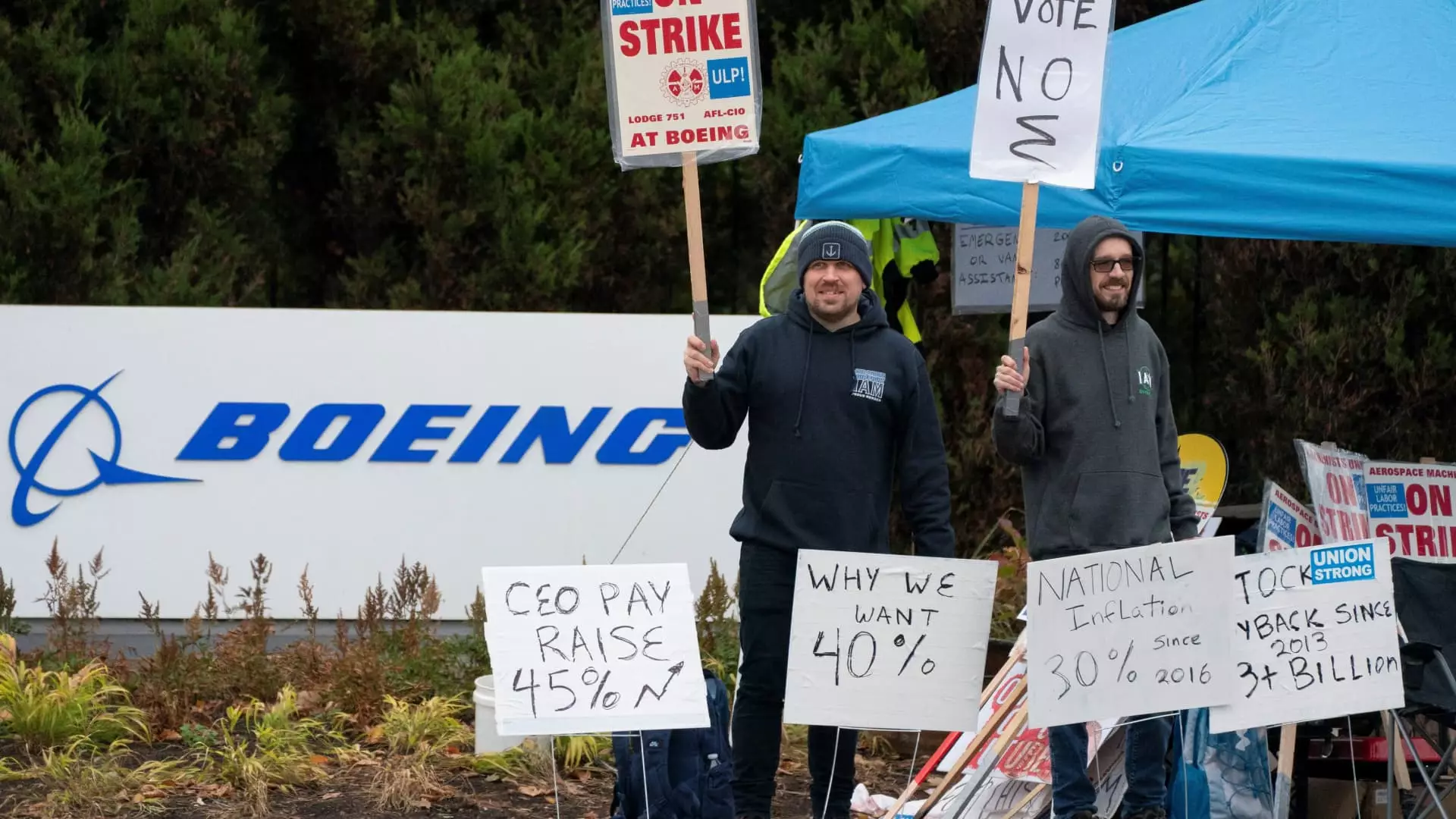The ongoing strike at Boeing, which has persisted for seven weeks and critically impacted the aviation giant’s operations, is set to undergo a pivotal review. The International Association of Machinists and Aerospace Workers District 751 has introduced a new compensation proposal aimed at alleviating labor tensions and possibly concluding the strike. As the union prepares to put the proposal to a vote on Monday, the urgency for workers to return to production facilities has never been clearer for Boeing, an entity facing escalating financial losses.
At the heart of the newly negotiated offer is a significant wage increase of 38% over the next four years, an improvement from a prior proposal of 35%. This adjustment brings total compounded pay increases to an enticing 44%, highlighting the union’s focus on meeting the rising cost of living in the Seattle area. Additionally, the offer includes a one-time ratification bonus of $12,000, with an alternative option of a $7,000 bonus combined with a $5,000 contribution to workers’ 401(k) plans. The union’s recent communication emphasized that prolonging the strike would not be in their members’ best interest, reiterating the union’s position that negotiations have reached an optimal conclusion.
Boeing’s machinists, who number over 32,000, initiated a strike on September 13 after rejecting a tentative agreement. This abrupt work stoppage stemmed from frustrations surrounding compensation fairness and working conditions. Notably, the negotiations have gained national attention, influencing job reports and drawing the involvement of federal authorities. Acting Labor Secretary Julie Su’s engagement with both Boeing and the union this week symbolized the government’s concern regarding the labor dispute and its broader economic implications.
As Boeing progresses through this tumultuous period, the CEO, Kelly Ortberg, has sought to unite the workforce, emphasizing the importance of collaboration to restore and advance the company’s mission of delivering top-tier aircraft. His recent statement encapsulated the desperation to focus on production, reflecting the urgency in the face of dwindling operations.
The ramifications of the strike extend beyond Boeing, impacting the U.S. job market. October’s employment figures revealed that the walkout had tangible effects on national job growth. Recognizing these factors, President Biden commended both the union’s leadership and Boeing for working towards a satisfactory resolution, acknowledging that machinists have historically made sacrifices and deserve recognition through substantial agreements.
The economic landscape in which Boeing operates has dramatically shifted, particularly amidst stiff competition from tech titans such as Microsoft and Amazon, drawing talent away with lucrative offers. As the cost of living continues to soar, the demand for higher wages has become a pressing issue for Boeing’s workers.
The union’s latest contract proposal underlines Boeing’s commitment to maintaining operations in the Puget Sound area while addressing the workforce’s concerns. However, the company’s challenges have compounded, notably including a strategic shift of some production operations to South Carolina, where conditions can differ given non-union status.
Amidst the backdrop of existing production troubles and safety fears, such as the recent issues linked to the Boeing 737 Max, the firm has faced more than $6 billion in losses over a recent quarter, highlighting the cumbersome financial weight of the ongoing crisis. The trajectory forward will inherently rely on the cooperation between management and labor, with the potential new contracts reflecting a critical turning point for a company determined to stabilize and innovate amidst adversity.
As Boeing and its machinists’ union prepare to transition out of this turbulent chapter, the outcome of the upcoming vote will significantly dictate both the company’s financial future and the workforce’s stability. The intricate tapestry of negotiations illustrates the complexities faced in balancing profitability with fair compensation, a theme that resonates across industries in today’s economic environment.

Leave a Reply